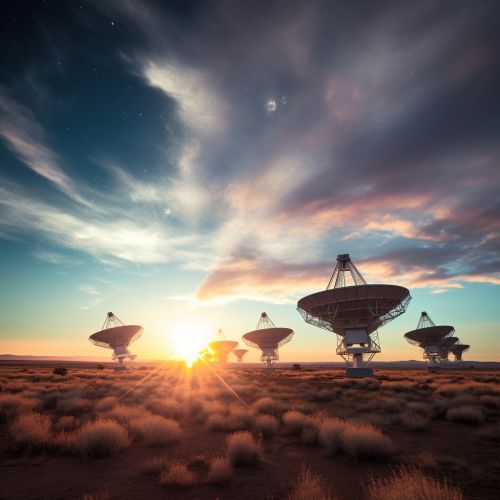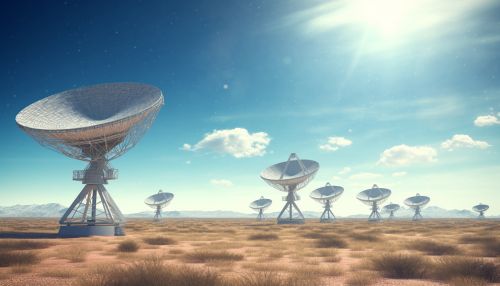Very Large Array
Overview
The Very Large Array (VLA) is a radio astronomy observatory located in central New Mexico on the Plains of San Agustin, between the towns of Magdalena and Datil. It is a component of the National Radio Astronomy Observatory (NRAO). The VLA consists of 27 independent antennas, each of which has a dish diameter of 25 meters (82 feet) and weighs 209 metric tons. The data from the antennas is combined electronically to give the resolution of an antenna 36km (22 miles) across, with the sensitivity of a dish 130 meters (422 feet) in diameter.


History
The VLA was conceived by a group of astronomers in the early 1970s as a tool to probe the Universe with unprecedented detail and sensitivity. The U.S. Congress approved funding for the $78.5 million project in 1972, and construction began the following year. The VLA was officially dedicated in 1980 and has been operational since 1983. It has undergone several upgrades to improve its capabilities, the most recent of which was completed in 2012 and significantly increased its sensitivity, frequency range, and resolution.
Design and Operation
The VLA operates by receiving radio waves from space, which are then amplified and processed to create images of celestial objects. The 27 antennas are arranged in a Y-shaped configuration, with each arm of the Y measuring 21 kilometers (13 miles) in length. The antennas can be moved along tracks to change the array's configuration and thus its resolving power. The VLA can operate at frequencies from 1 to 50 GHz, with a maximum resolving power of about 0.04 arcseconds at the highest frequency.
The VLA is an example of an interferometer, a type of telescope that combines the data from several small telescopes to simulate a larger telescope. This technique allows the VLA to achieve the resolution of a single dish antenna that would be 36 kilometers in diameter. The data from the antennas is combined in a central correlator, a powerful supercomputer that performs up to 10^16 operations per second.
Scientific Achievements
The VLA has contributed to many areas of astronomical research, including studies of galaxies, quasars, pulsars, and supernovae. It has also been used to make detailed images of the Sun and planets in our Solar System. Some of the VLA's most notable discoveries include the detection of water ice on Mercury, the mapping of radio emissions from Jupiter's radiation belts, and the study of the structure and dynamics of the Milky Way galaxy.
Future Developments
The NRAO has proposed a next-generation VLA (ngVLA) that would be a major leap forward in capability, allowing astronomers to address fundamental questions in astronomy and astrophysics. The ngVLA would consist of 263 antennas spread over 8,860 kilometers (5,500 miles), with ten times the sensitivity and 18 times the resolution of the current VLA. The project is currently in the design and development phase, with construction expected to begin in the mid-2020s.
